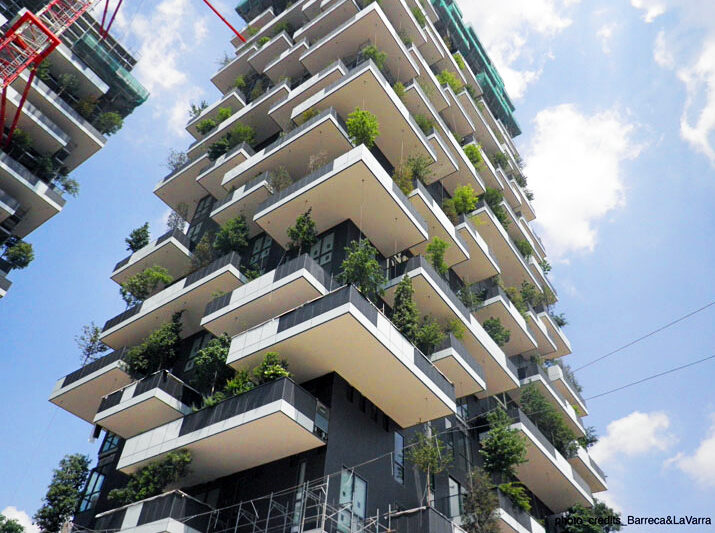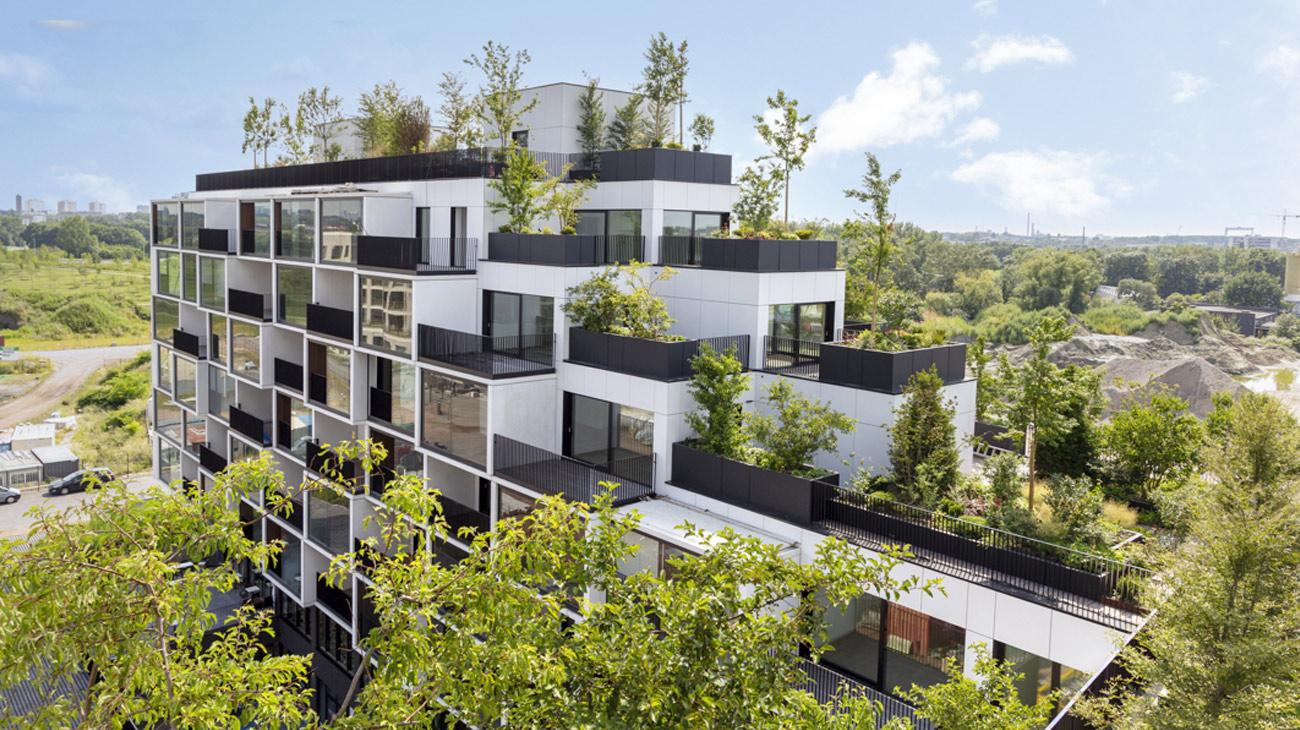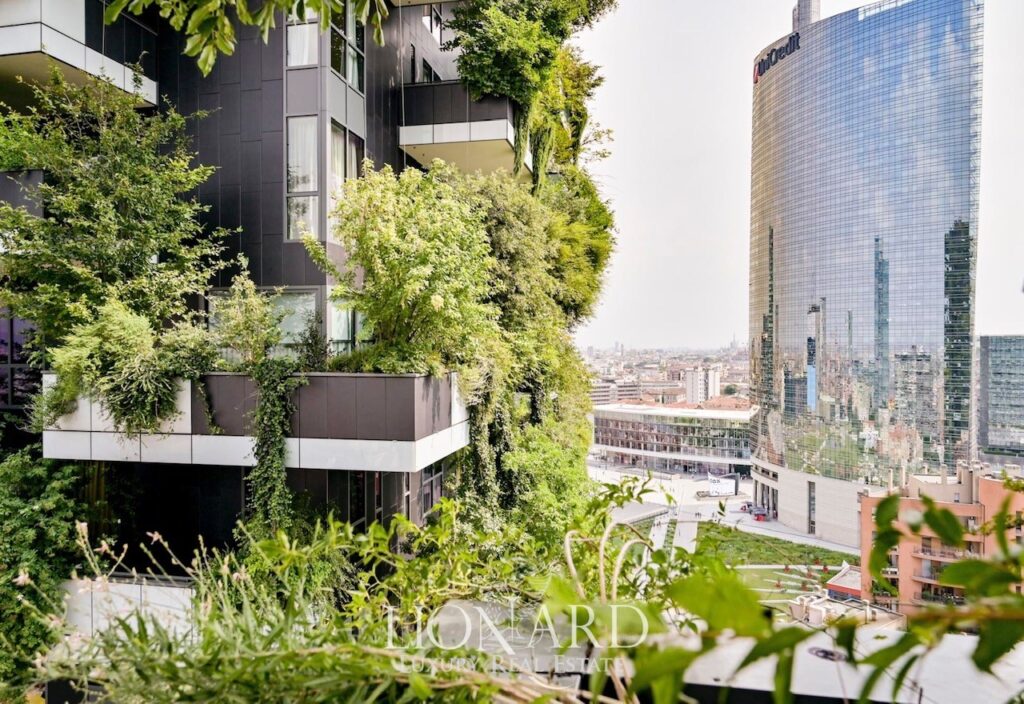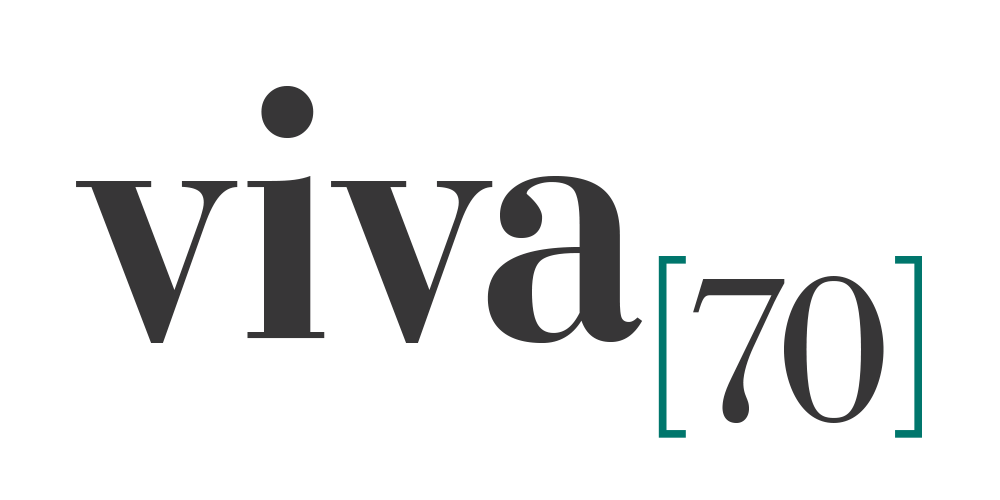
A what? What’s a forest apartment? Inner City? How do you grow forests on a building? You mean climbing plants, not forests? The mind boggles and being a person always attracted to creative, boggling minds I had to check this one out.
I came across the Bosco Verticale (Vertical Forest) concept in the work of architects from the Boeri Studios. (Stefano Boeri, Gianandrea Barreca and Giovanni La Varra) They have built a pair of inner city apartment towers in Milan in an area being rehabilitated. The smallest tower has 18 floors, 76 metres tall and the largest 26 floors and 110 metres high.
The tower blocks were opened in 2014 and contain more than 900 trees, 500 shrubs and 1,500 perennial plants on the terraces of the two towers. The blocks are residential apartments and the development also houses an 11 story office block. Boeri says that the forest towers concept was inspired by a novel by written by Italo Calvino about a forest dwelling man.
Why is this architecture so ground-breaking? Over the years our awareness of the role of plants in mitigating smog and producing oxygen has grown. We are seeing vertical gardens embraced in city apartments and the shrivelled cacti on a city balcony is hopefully, becoming a thing of the past! Atrium and vertical gardens can be incorporated and retrofitted into office design for many years now.
But the Bosco Verticale has taken this concept to a new level. These tree packed high-rises help cities built for density, adding more beautiful housing while contributing to air quality and quality of life. Trees and plants are a most efficient and cost effective way to absorb the high levels of carbon dioxide generated in cities and another way to help combat climate change.
The 20,000 trees and plants in these buildings will convert approximately 44,000 pounds of carbon each year. Creating biodiversity is another benefit of this type of architecture, with more than 90 species of birds and insects already attracted to life at the Bosco Verticale.
Plants and trees are also used to moderate temperatures in the buildings in all seasons, shading the interiors from the sun and blocking harsh winds. The vegetation also protects the building and its inhabitants from noise and dust pollution so characteristic of inner- city life.

The Bosco Verticale development is self- sufficient by using renewable energy from solar and filtered waste water feeds the plants.
Given the weight of the urban forest the architects used steel reinforced concrete balconies to with stand winds. Balconies are designed to be 28cm thick and with 1.30 metre parapets.
Bosco Verticale is the first model of urban density of nature in a city and has won awards including the International High-Rise Award 2014. Many other such developments are being built in China and Europe.
6 years after completion the penthouse apartment on the 26 floor is offered for sale to buyers. The price is in excess of $17.5m

As I walked around a new apartment development in East Melbourne the other day, all these ideas collided. The East Melbourne apartment faces the much coveted Fitzroy gardens. Inner city apartments facing water or public parks are at a premium and prices are astronomical. The top floor East Melbourne apartment was selling for $8m!
It makes so much sense to create apartment developments with their own in-built gardens, forests, climate control and a level of sustainability that is no longer optional if we are to survive. As more forest apartments are built technologies will improve and the cost come down to create these very beautiful and forward thinking, sustainable apartments. I’d move in tomorrow? Would you?
